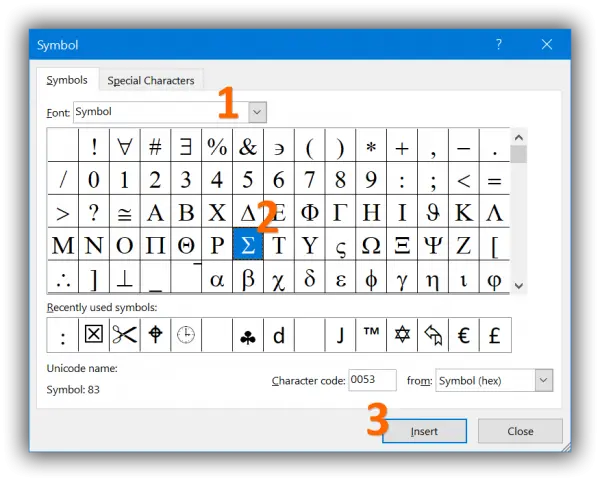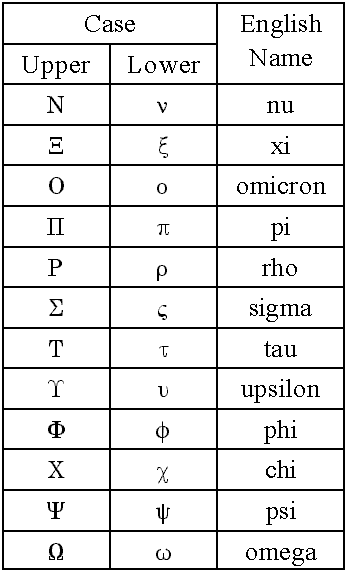

While in in-place edit mode, highlight the text that you want to bold, italicize, etc., then click the one of the buttons on the Format toolbar or click the desired button then type your character(s).Lastly, save your project file as an OPJ file (not OPJU).Īdding Special Characters, Versions 2017 and Older Therefore, if you working with 2018 or later and you plan to share your work with Origin users who are using pre-2018 versions of Origin you should (1) insert your Unicode characters using the Symbol Map (not the Character Map) and (2) be sure to check the Use escape notation check box at the bottom of the Symbol Map dialog. Note: Prior to Origin 2018, Origin did not support Unicode. Alternately, enter the 4-character Unicode sequence in the Go to Unicode box and click Insert. Set Font, as needed, leave Unicode checked, find your character and click Insert. 03B8 for θ) and press ALT+X on your keyboard.
Greek sigma symbol in word code#

There are two basic modes for inserting special characters into text labels:
Greek sigma symbol in word pdf#
Somehow, that translation to PDF is getting garbled.1.32 FAQ-148 How Do I Insert Special Characters into Text Labels? The problem seems to be the embedded Visio in the Word document. The newly created PDF faithfully replicated the Visio file. One final note: used the Visio Publish as PDF or XPS add in. Was curious if there were other behavior issues. Oh I did play around with the 3rd entry, so it's size is not the same. I'm attaching the Word and PDF files as examples. While all of the characters translated correctly, that is, all remained as symbol font letters, the spacing between letters became distorted such that some letters overlapped. The 2nd two methods did not fair so well.

That's when problems arose.ġ.) The simple pasted text translated into pdf without any problems.ģ.) The inserted Visio object had issues. Then I saved the Word document as pdf using the MS provided as Adobe PDF. Opened Word doc, W2010, and did the following:Ģ.) Did a paste special as Visio drawing objectģ.) Inserted a Visio object containing the original font string.Īll three look normal, just like the original text string done in Visio. I created a small Visio file, V2007, that consisted of a string of letters using the symbol font.

I guess one could do the same with the Sigma. My current workaround to the Omega problem was to draw a shape that looks like an Omega and set its properties to automatically scale line thickness with size. I am still working in Word 2003 (haven't yet heard about any new features or fixes in 2007 or later that make any difference to me), and I understand that my bitmap fix does not work in 2007. I stumbled upon this workaround by accident and I have no idea why it works, but of course, when I do that the Omega changes to a O. This sometimes happens with regular text as well, and the solution I have found is to right click on the diagram in Word and select Visio Object>Convert>Microsoft Visio Drawing. To make things even more interesting, sometimes the Omega is fine in the PDF, but upon closer examination I see that it has somehow been converted to bitmap. I have tried different PDF-ing programs but the result is always the same. When I make Visio diagrams with the Omega symbol, everything is fine when I paste the diagram into Word, but when I convert to PDF, the Omega changes to an O (uppercase letter O, which is where the Omega is in the Greek alphabet - both are the 15th capital letter). I have been having a similar problem for a long time, but it's even more convoluted.


 0 kommentar(er)
0 kommentar(er)
